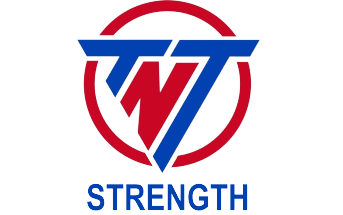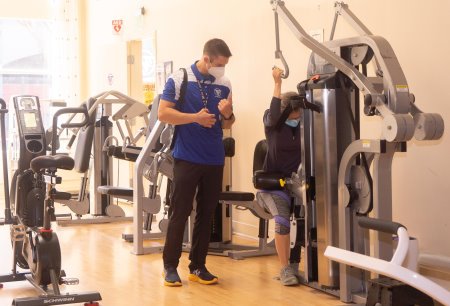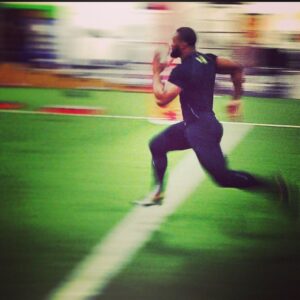
Q: Can strength training improve an athlete’s quickness?
A: Quickness is a product of many factors, including but not limited to (1) the amount of muscle on the body, (2) the amount of body fat, (3) the lean muscle mass to total body-weight ratio, (4) skill level of the individual in question, (5) bodily proportions, (6) motivation.
Two of the easiest ways to accelerate the development of quickness is to increase your lean muscle mass (up to a point) and increase your bodies ability to produce maximal force. Increasing lean muscle mass will favorably change your ratio of muscle mass to total body-weight.
Once you have reached an optimal weight (the most lean muscle mass you can gain without slowing down) you should then focus on improving Mass-Specific- Force. The most effective way to accomplish these goals is through goal appropriate strength training combined with a well balanced diet.
Some points to consider:
 Box jumps are not required for developing quickness.
Box jumps are not required for developing quickness.
Straight-ahead sprinting and change-of-direction agility drills elicit a “plyometric” (stretch-shortening) effect. Therefore, whenever you’re sprinting and doing agility drills, your doing plyometrics. No need to spend an inordinate amount of time jumping on and off boxes.
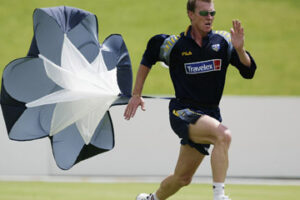 Don’t waste time with gadgets and gizmos.
Don’t waste time with gadgets and gizmos.
Speed gadgets and gimmicks such as parachutes, rubber tubing, sleds, weighted vests, and the like are nothing exceptional. They by themselves will not make you “run like the wind” after their use. They can be used for variety in a conditioning program (repeated use can create fatigue), but that’s about it. It is a fact that running with weight or against resistance alters running mechanics from those used in unweighted sprinting you’ll experience during a game (sport-specific). Therefore, keep your running both sport and energy system-specific by replicating the situations / runs you’ll face in competition.
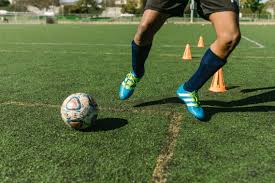 Be sure you are practicing specific to the demands of your sport.
Be sure you are practicing specific to the demands of your sport.
So remember: All other factors being equal, running speed can be improved if one A.) gets stronger, B.) stays lean and C.) practices the specific skills of running fast for your sport.
TAKU’s Note: For assistance with creating sport specific Strength and Conditioning programs contact us here at TNT Strength.
TEXT “TNT” TO 855.796.9905 for more info
TNT has over 40 years of combined fitness experience, so if you’re looking for a coach who can train you in person in our Oakland California Studio or online from anywhere in the world, visit our online training page to book a consultation.
